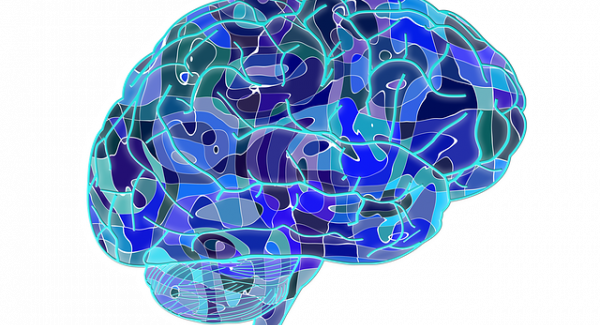Commercials on the importance of training your brain are nearly a daily occurrence nowadays. A world without Sudoku has almost become unthinkable. Not only puzzles like these, but also numerous specific internet exercise-sites and try-at-home packages are devoted to this phenomenon. This merchandise is usually accompanied by slogans saying something like: "improve cognitive ability and prevent the negative outcome of the aging brain". Just as physical exercise improves the shape of your body muscles, cognitive exercise should keep your brain in optimal form. Have the retailers of these products merely found a good catchphrase to sell their products, or do they actually have a point? In other words, can mental deterioration be prevented by cognitive exercise? It might come in handy to know some facts about the brain before starting to unravel the answer to this question.
Around the age of twenty your brain is fully mature. This adult brain then consists of billions of brain cells, the neurons, which make connections with each other and thereby form certain networks. Different networks are activated during different tasks. The adult brain has the ability to make new neurons throughout life. However, this so-called neuroregeneration is restricted to only certain areas in the brain. Nevertheless, the brain is capable of reorganizing connections during this period. As soon as the brain has reached its maximum volume, it will slowly decrease in size again. This is caused by loss of neurons and may eventually in part cause some of the mental problems of being old.
Alzheimer’s disease, probably the most well known disease related to the aging brain, can only be diagnosed with certainty after death. Autopsy results of several women showed that all had reached a severe stage of Alzheimer’s (Scarmeas and Stern, 2003). Interestingly, however, a quarter of these women had never shown any cognitive symptoms during their lives. This finding illustrates that a direct relationship between the severity of brain degradation and the influence on the functioning of an individual is unlikely. Consequently, the differences in outcome must arise from certain personal characteristics.
Several theories have tried to explain this phenomenon. One of these hypotheses describes the presence of a cognitive reserve varying in extent per individual (Scarmeas and Stern, 2003). The exact definition of this reserve is unclear. Some researchers define it as additional volume of the brain. In other words, persons with a higher brain volume should have extra capacity to cope with damage or neurodegeneration than people with smaller brain volumes. The more spare tissue, the more injuries can be ‘buffered’, so to speak. Others state that the reserve consists of relatively more flexible and efficient connections in the brain. When a situation requires additional capacity, people with a reserve are assumed to be able to switch to different networks from the ones originally used. This benefit of flexibility can be illustrated by the example of a mathematician. A professional mathematician is capable of solving a problem in several ways, while a less experienced person will probably only be able to think of one. In this light, experienced individuals can switch circuits at times when original ones become insufficient. The efficient component entails that fewer neurons are needed for ‘skilled’ information processing (Kelly and Garavan, 2005).
Additionally, Robertson and Murre (1999) suggest that the severity of the damage can influence which coping mechanisms are used. Deficits resulting from mild injuries can be fully recovered, severe damage can only be compensated for by other networks, and moderately damaged brains can follow either path. Accurate rehabilitation training should enable the brain in the latter stage to fully recover. Repeated activation of neurons may reestablish the broken connections. It depends, however, on the number of connections that are damaged within a network. As stated earlier, regeneration of new brain cells occurs only at specific brain sites. Changes in or strengthening of connections, on the other hand, can theoretically happen in all brain locations. Neurons attain a stronger and speedier connection through repeated synchronized stimulation (Robertson and Murre, 1999). This kind of stimulation happens in a healthy brain, for example, while you are learning a new football technique or knitting stitch. The brain is therefore said to possess ‘experience-dependent plasticity’ qualities. It is thus not impossible that cognitive training can have similar effects on the dynamics of the brain. Proper activation could, by this mechanism, increase your brain reserve.
Regardless of which of the theories holds true, all of them indicate that individual differences cause deviations in outcome. These variations are believed to arise from genetic predisposition, level of education and intelligence (Scarmeas and Stern, 2003 & Stern et al, 2005). Not surprisingly, these variables are all intertwined. Intelligence is, for instance, not only known to be a predictor of level of education but also a heritable trait. Obviously, environmental and personality aspects play an important role and co-determine whether intelligence will come to full expression. Consequently, factors such as socio-economic background, culture, support and motivation cannot be ignored. In addition, to complicate matters even further, intelligence can be subdivided into several components. Therefore many IQ tests are made up of several subtasks that all measure a different form of intelligence. A person that has excellent verbal skills may therefore very well have weak memory capabilities (Stern et al., 2005).
In summary, intelligence is a collection of complex processes that may develop differently in each individual. Keeping our mathematician in mind, we might conclude tentatively that cognitive reserve is restricted to regions that the specific individual is experienced in. This could be compared to the physical representations in the brain. In the picture below two homunculi are displayed. These famous pictures show how much space the brain uses on average for the proper sensory and motor functioning of your body parts. For example, lips are better represented than toes. Thinking of the sensitivity and ability of movement lips possess compared to toes, this distribution is logical. Highly experienced musicians have been found to have increased volume in specific areas of the brain (Kelly and Garavan, 2005). Well-developed cognitive skills may, in the same way, take up more space in the brain than weakly developed skills. The only difference is that cognitive skills are less clearly localized in the brain. However, in many cognitive tasks the prefrontal cortex plays an important and integrative role.
In conclusion, the adult brain is able to reorganize under the influence of practice. Creating optimal cognitive reserves would in that case require repeated practice of all of these skills. The best-trained areas or networks and the accessory skills, should then be best protected against age-related weakening.
The Nintendo brain-training program Brain Age, co-developed by neuroscientist Ryuta Kawashima, seems to support this idea. The exercises range from reading classical literature out loud to drawing pictures and performing simple mathematical exercises. Kawashima claims that persons with mild cognitive impairments showed less decline while using the game two to five times a week, compared to those who had not performed these exercises. These results sound promising, but it is hard to determine whether they are truly due to the training program. Furthermore, other researchers who also developed brain training programs state that practice needs to be carried out at least daily if positive results are to be seen. In addition, Kelly and Garavan (2005) warn that there may be confounding effects: simply becoming familiar with tasks may increase performance. Also, exercise might train users on aspects of the tasks that have nothing to do with the cognitive skill that was initially aimed for, but still improve the task outcome, for example the motor skills required to perform them.
All things considered, exercising your mind definitely seems to have a positive effect on the cognitive performance of the brain. It is, however, still unclear exactly how beneficial this outcome is. In any case, the exercises should be performed on a very regular basis to experience some benefit and one should take into account that a broad range of cognitive skills have to be practiced in order to obtain an optimal result. Furthermore, practice should take up an as-yet-unknown minimal amount of time per day. Be aware, as with all commercial activities, not all is as straightforward as companies make out. Finally, if puzzling is just not your thing, do not worry. Social relationships have also found to be important contributors in becoming and staying a healthy, happy elderly person. One can only imagine the positive influences that group brain training could have.
References
Kelly, A.M.C., Garavan, H., (2005). Human functional neuroimaging of brain changes associated with practice. Cerebral Cortex, 15, 1089-1102.
Robertson, I., Murre, J., (1999). Rehabilitation of brain damage: brain plasticity and principles of guided recovery. Psychological Bulletin, 125, 544-575.
Scarmeas, N., Stern, Y., (2003). Cognitive reserve and lifestyle. Journal of Clinical and Neuropsychology, 25, 589-593.
Stern, Y., Habeck, C., Scarmeas, N., Moeller, J., Anderson, K.E., Hilton, H.J., Flynn, J.,Sackeim, H. & van Heertum, R. (2005). Brain networks associated with cognitive reserve in healthy young and old adults. Cerebral Cortex, 15, 394-402
Websites
General Information
Kandel, E.R., Schwartz, J.H., & Jessell, T.M. (2000). Principles of Neural Science. The McGraw-Hill Companies, Inc.


